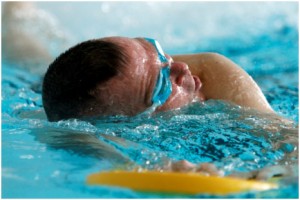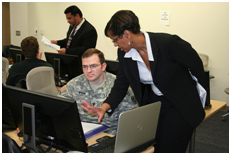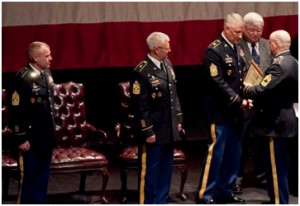By Emily Anderson, WTC Stratcom
Starting a business can seem like a difficult process, but wounded, ill, and injured Soldiers and Veterans can take comfort in the fact there are many resources available to help assist in the entrepreneurship process.
“There are a lot of businesses and resources out there to teach our population how to own and run a successful business,” said Vicki Mullen, AW2 Labor Liaison Specialist.
Mullen and Cory Hixson, Action Officer, the Warrior Transition Command (WTC) Commander’s Action Group, will conduct a two-hour, call-in training session on January 17, 2013 for AW2 Soldiers, Veterans, Family members, and Army Wounded Warrior Program (AW2) Advocates.
The first class is being offered to individuals in the southern region, and additional training sessions will be offered regionally.
“We decided to provide the training by regions to ensure we are reaching as many people as possible,” Mullen said. “We want to make sure everyone has the opportunity to listen to some of the tools available for starting their own business.”
Originally this type of training was taught to the WTU transition coordinators, but Hixson saw there was a need for this information to be provided in a larger scale directly to the WTU and AW2 populations.
“There are so many resources at their fingertips, but they are not taking advantage of them because many do not know to ask the questions,” said Hixson, who attended an entrepreneurship boot camp and completed extensive research on self employment and starting your own business.
“We know the need is out there,” Hixson said. “There is such an opportunity for our wounded, ill, and injured to not have to work a nine-to-five job, but to own a business. They can do what they like to do and not depend on sitting behind a desk.”
During the training session, Hixson will speak about the different centers and programs within the Small Business Administration, where to find information on the National Resource Directory, explain what the Veteran Franchise Centers is, as well as provide information about additional programs such as Operation Jump Start, Operation Boots to Business, and several other resources.
He will also give listeners a chance to ask questions about a variety of small business topics.
“I want to help by pointing out small business training and resources, but also answer any questions that have already popped up,” Hixson said.
“Many do not realize there are resources to start a business specifically for those who are female, disabled, a Guard orReserve Soldier, a Family member, a Caregiver, and so much more,” he added.
For more information, contact the WTC at (703)325-8999 or email www.usarmy.pentagon.medcom-WTC.mbx.career-education-readiness-br@mail.mil or usarmy.pentagon.medcom-WTC.mbx.AW2-career-program@mail.mil.









